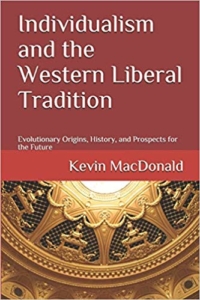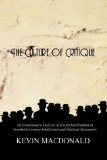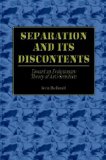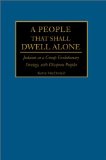
4775 Words
Introduction
If you’re looking for evidence to support some political, ideological, or religious position while studying history, you will probably find it if you want to badly enough. The clues are all there, and it’s all too tempting to prioritize some clues over others or interpret some clues more broadly than others in order to promote a certain worldview. Whenever I study the Jewish Question, I try to avoid this temptation by setting objective standards ahead of time, and then standing by those standards to see whether the mainstream Jewish narrative or the dissident counter narrative is more truthful. I had such standards in mind when opening Between Dignity and Despair, a study of Jewish life in Nazi Germany written in 1998 by Marion Kaplan and published by Oxford University Press.
At stake here is what’s almost always at stake when mainstream academics write about Nazi Germany. The Nazis must be proven, time and time again, to be irredeemably evil and irrational. This is the most expedient way to ensure that the White inhabitants of Europe be as open as possible to Jewish influence moving forward. Unfortunately for Whites, this also necessitates their behaving in maladaptive and dysgenic ways, because strong, healthy, racially aware Whites will compete with Jews as Jews, knowing full well the positives and negatives that Jews brings to any country they inhabit. Thus, opinions on Nazi Germany—to say the least—are important.
But the question remains, were the Nazis evil and irrational? Kaplan seems to think so, and makes her case with a plethora of memoirs and letters written by Jews who lived in Germany during the Nazi period—which for argument’s sake I will assume are truthful. Still, I found Between Dignity and Despair highly unconvincing.
What are my standards?
- That Nazi treatment of German Jews was more or less reasonable given the surrounding historical circumstances;
- That Nazi treatment of German Jews during wartime must be measured with a different yardstick than during peacetime;
- That German Jews indeed suffered, but their suffering was more or less commensurate with gentile suffering in Germany and the disproportionately Jewish-run Soviet Union.
I began Between Dignity and Despair thinking that if Kaplan can offer enough historical evidence to disprove these standards, then she will vindicate the mainstream narrative of Nazi Germany. The problem I encountered right away, however, is that Kaplan doesn’t even try to do this. She is what the lit critics would call an unreliable narrator, in that she is not in the least bit interested in the German perspective unless that German perspective is philo-Semitic. This causes her to omit enough information not to be completely trusted.
This is not to say her work is without merit. Between Dignity and Despair is a readable and coherent account of day-to-day Jewish life in Nazi Germany—distaff-skewed but interesting in its detail and impressive scope. But as an indictment of the Nazis, it is exceedingly weak.
Kaplan As Unreliable Narrator
Kaplan opens her study by asking the obvious but necessary questions:
What did it feel like to be a Jew in Nazi Germany? What kind of Jewish life was there in Germany after 1933? Why did German Jews not leave sooner? What did non-Jewish Germans do, and what did they know?
In answering these questions, Kaplan presumes the existential innocence of Germany Jewry, as well as the fundamental Jewish right to access gentiles. In other words, Jews have the right to exclude gentiles from their communities, but never the other way around. More to the point of the book, she attempts to argue that the “social death” inflicted upon the Jews in Nazi Germany led inevitably to their physical death and then to the genocide of the Jews of Europe. She also attempts to explain why so many Jews never left Germany during the leadup to war. Kaplan has such contempt for racially aware Germans at that time that she refers to them as “Aryan,” always in scare quotes. This contempt leads her to omit extremely important information which would help explain why Germany became so inhospitable to Jews during the Nazi period.
Kaplan begins with the same blind spot found in Edwin Black’s The Transfer Agreement, first published in 1983—namely, that the German boycott of Jewish businesses in 1933 and the later economic repression of German Jews was not a justifiable retaliation to the worldwide Jewish boycott of Germany, which was then devastating a German economy already crippled by the Great Depression. Of course it was. At least Black discusses the Jewish anti-German boycott. Kaplan doesn’t even do that, and simply relies upon the ignorance of her readership by assuming that the anti-Jewish boycott, like all anti-Jewish measures from the time, sprang only from the black hearts of gentiles.
Another blind spot is the demonstrable connection between Jews and communism. This had proven catastrophic in Russia in 1917 and continued to be so during the 1930s, as was well-known in Germany at the time. This connection became evident in Hungary a few years later under the repressive rule of Béla Kun, and also nearly engendered a German Soviet republic in 1918 when Kurt Eisner and a clique of Jewish intellectuals attempted a violent revolution in Bavaria. Were the Germans supposed to forget about this? Kaplan seems to think so since, early in her work, she attempts to drum up sympathy for the communist Jews of Germany after the Nazis quite rightfully cracked down on them:
Jews jailed as communists—whether the charge was true or false—had the most to dread. They were accused of “preparing for high treason.” Recha Rothschild, a member of the Communist Party, quickly destroyed her files in February 1933. She fled her apartment, returning to it (at the end of March) after the SA had stormed in, stolen her belongings, and shredded all of her books and papers. She hid but was caught and charged with being a courier for the Communist Party, even though there was no hard evidence against her. The Reich court declared the evidence too flimsy, but the Prussian court, under Nazi control, sentenced Rothschild to two years in prison. There, among political prisoners, criminals, and prostitutes, her health deteriorated dangerously. Spitting up blood, she still refused “to drop dead for the Nazis.”
Not admitting what a lethal threat communism was to European nations at the time, and not putting the above sob story (and others like it) in perspective of the Jewish-run Soviet gulag system should make any discerning reader distrust Marion Kaplan. Her credibility diminishes even further when she proclaims that many of the Jews whom the Nazis oppressed throughout the 1930s were patriotic Germans. She cannot have it both ways. One cannot cry crocodile tears over Jewish communists—anti-patriots in theory and practice—and then expect readers to believe in the true-blue loyalty of German Jews. And that’s too bad, because I’m sure many German Jews were patriots, especially the ones who fought in the First World War. But when culling her sources, Kaplan rarely clarifies when a particular Jew was attacked, arrested, or repressed because he was Jewish or because he was a communist troublemaker or for any other perfectly legitimate reason. It’s as if she has something to hide.
Another egregious omission is Kaplan’s retelling of the German mass deportation of Polish Jews in October 1938. Not only does she describe it as a horror show of privation and terror as evil Nazis swooped down upon helpless Jews in their homes and herded them off to the hinterland, but she neglects to mention the perfectly valid reasons why the Germans were deporting Polish Jews in the first place. According to David Hoggan in The Forced War, Poland was striving to rid itself of its Jews and declared in October 1938 that Polish Jews living in Germany would become stateless unless they returned to Poland to get their passports validated, which the Polish government was preventing them from doing—at bayonet point. This was an egregious attempt to dump unwanted citizens onto a neighboring country, and forced the Germans to respond through deportations—which was their right, given that the Polish Jews were not German citizens. According to Hoggan, the Germans treated these deportees quite well.
The German authorities took great pains to act without guilt or blame. They organized the transport of Polish Jews with great care, and they made certain that the travelers had good facilities, including plenty of space and ample good food. The story told years later by the American journalist. William Shirer, about “Jews deported to Poland in boxcars” under brutal conditions, was clearly fictitious. The first trains passed the border to Polish stations before the Poles were prepared to stop them. After that, the unbelievable happened. Although the last day for issuance of the stamps was not until October 29th, and the new exclusion policy was not scheduled to take effect until October 30th, and Polish border police attempted to prevent the Jews from entering Poland. The Germans had made no preparation for this development, and soon thousands of Polish Jews were pouring into a few small border towns in Upper Silesia and elsewhere.
Kaplan does not tell her readership that the Germans were willing to have the Polish Jews re-enter Germany—but only after getting their passports validated in their recalcitrant home country. She does not reveal that the Poles retaliated by deporting large number of German Poles back into Germany. She also does not admit that many of these Polish Jews did indeed return to Germany and actually preferred it there, even as late as eleven months before the war.
In a moment of sheer dishonesty, Kaplan ascribes “despair” as Herschel Grynszpan’s motive to assassinate German diplomat Ernst vom Rath on November 7, 1938 in Paris. This famously set off the violent Kristallnacht pogrom days later. Upon learning that his parents and sister were being held near the Polish border with other deportees, Grynszpan took vom Rath’s life in an act of revenge. Kaplan makes this seem reasonable, yet fails to mention that Grynszpan was a “syphilitic degenerate,” according to Hoggan, who was wanted by the French police. She also does not mention that the postcard Grynszpan received from his deported family did not include any complaints regarding their treatment by the Germans.
Another sin of omission is Kaplan’s recapitulation of Adolf Hitler’s famous Reichstag speech of January30, 1939, which she claimed “ended with the ominous prophesy that this war would not see the ‘Bolshevization of the earth and thus the victory of Jewry, but the annihilation of the Jewish race in Europe.’” What she neglects to mention is that this was not prophesy on the part of Hitler, but a warning for the Allies not to declare war on Germany, which given Poland’s abusiveness towards Germany and its own German minority, they had no moral reason to do.
Contradicting Edwin Black
Worst of all in my opinion is Kaplan’s near complete blackout of the Transfer Agreement, otherwise called the Haavara Transfer, in which Nazi Germany worked with Zionist Jews to pave the way for German-Jewish emigration to Palestine throughout the 1930s. According to Kaplan, the Nazi government urged Jews to emigrate, yet set impediments which made it extremely difficult for them to do so.
The Nazis created another major obstacle by restricting the amount of currency and property Jews could take with them. The plunder of Jewish property was part and parcel of all emigration proceedings. The Nazis “pressured Jews to leave the country, but the privilege of leaving was expensive.” The Reich Flight Tax (Reichsfluchtsteuer), a stringent property tax on émigrés, threatened to impoverish prospective emigrants. First passed by the Brüning government in 1931 to prevent capital flight, the Nazis raised it to punitive heights for emigrating Jews. In all, the German treasury may have collected as much as 900 million marks from the Reich Flight Tax alone. Many people had to sell all their belongings simply to pay this one tax. Gerdy Stoppleman, for example, sent her husband, recently released from Sachsenhausen concentration camp, ahead to England while she stayed behind to pay the tax: “To be able to pay the . . . tax I sold our furniture, valuable paintings and carpets . . . all dirt cheap. Many a home of true Aryans, SA, and SS became exceedingly well furnished.”
In other words, either material possessions and wealth meant more to German Jews than their very lives, or Jewish life in Nazi Germany before the war wasn’t quite as bad Kaplan alleges.
Kaplan’s characterization of the Reich Flight Tax is also exaggerated, given that Black in The Transfer Agreement places it at 25 percent—steep, but not prohibitive. The scheme, which was actually encouraged by the Nazis, involved one placing one’s Reichsmarks in a frozen bank account, where they were known as sperrmarks. From there, Black lays it all out:
In practice, then, if a German citizen decided to emigrate, he would sell off all his assets, realizing, say, RM 100,000, equal to $33,000. That entire RM 100,000 would be deposited into a blocked account, and automatically suffer a 25 percent Flight Tax. Of the RM 75,000 that remained, the emigrant would be allowed to take with him only a few hundred reichsmarks, which would be converted to francs, dollars, or whatever currency was needed to satisfy immigrant entry requirements. The emigrant would then own just under RM 75,000 in a blocked German account he could no longer spend. Before departing Germany, he would go to bank and offer to sell his sperrmarks to the highest bidder. A foreign buyer would be found, offering perhaps RM 60,000 for the 75,000 sperrmarks, paying with the equivalent in foreign currency from a foreign bank account. If agreed, the two would simply swap bank accounts. Thus, the foreign buyer would purchase RM 75,000 marks for the foreign equivalent of RM 60,000. And the emigrant would have successfully transferred his money out of Germany, albeit at a loss of about 20 percent after discounts to the buyer and bank commissions.
Not only this, but Black reports on a shady capitalist schemer named Sam Cohen who, for a time at least, streamlined this transfer agreement to enable Jews to expedite their emigration. And the Nazis were happily complicit given how this plan involved middlemen selling German goods abroad—which helped Germany endure the boycotts against them.
Of course, it was never easy. I’m sure there were quite a few German Jews who wanted to get out and could not for some reason or another—and often because of foreign restrictions, not German ones. Exceptions should be made for the aged who could not manage arduous travel and were not wanted in foreign countries in any case. And granted, it got more difficult to emigrate as war continued to grow on the horizon. According to Kaplan, the foreign exchange rate for émigré Jews described above dropped to 4 percent by 1939, an astonishingly low figure not repeated by Black and not clearly footnoted by Kaplan. But by focusing more on those Jews who could not or would not leave, and not the 60,000 who reestablished themselves in Palestine during the 1930s thanks to the Nazi-Zionist transfer agreement (to say nothing of the 200,000-plus other Jews who escaped elsewhere), Kaplan reveals her anti-German bias. At one point, she incidentally mentions how a German-Jewish woman learned how to be a corsetiere in Palestine when visiting her sister for three months. If Nazi Germany was the terrorist state she repeatedly claims, why did the woman come back?
Perhaps because, as Edwin Black writes, “German Jews simply did not want to leave.”
Assessing the Oppression Before the War
Kaplan’s heartfelt—if brazenly partisan—treatment of Jewish life before the war benefits from a rich selection of source material. She shares the statements, memories, and experiences of German Jews from all walks of life, although she focuses mostly on women and girls. Those interested in Jewish history, especially in this particularly difficult chapter in Jewish life, will benefit greatly from her research and compilation. And Jews did suffer greatly in Germany in the 1930s when compared to the preceding Weimar Republic. I don’t wish to downplay any of that. Yet when Kaplan’s metapolitical goals are not simply to document the dignity and despair of Jews in Nazi Germany but also to prejudiciously denounce Nazis as inherently immoral human beings, I must. There are levels to this. There is suffering, and there is suffering. Do Kaplan’s hapless subjects compare in any way to the millions of Whites who suffered at the same time under the boot of the communists in the largely-Jewish controlled Soviet Union? No, they don’t. They’re not even close.
Thanks to the Nuremberg laws of 1935, the official indignities that peaceful and presumably non-communist Jews had to endure within Nazi Germany included racial segregation, anti-Jewish discrimination, and their near-complete removal from mainstream German life. “Social death,” in other words—the kind of ostracism that Jews today force upon White identitarians everywhere. According to Hitler in his January 1939 Reichstag speech, Jews dominated many leading positions in German life and were harming Germany and making it less German. The Nuremburg laws were an attempt to rectify this. Unofficially, however, this sea change led to a wide array of abuses which were heaped on the unfortunate German Jews. These included: insults, intimidation, beatings, boycotts, property confiscations, denunciations, social isolation, and various kinds of humiliations. With a population of 80 million, of course there were some unstable individuals who committed violence upon innocent Jews or who were unscrupulous enough to take advantage of them. This sort of thing was bound to happen. And with their government officially recognizing Jews as second-class citizens, Jews essentially had no choice but to endure or leave.
Yet, life went on.
Throughout the first half of the book, Kaplan complains about hurt feelings, loneliness, and damaged self-esteem. So much of her appeal is emotional that Between Dignity and Despair reads at times like a soap opera. But as I once brought up in an essay entitled “The Woody Allen Fallacy,” it makes no sense to complain about the low quality of something, and then complain further that you don’t get enough of it. If the Nazis were so evil, why were German Jews so crestfallen when they couldn’t associate with them?
For single people, social life outside of the family network became increasingly difficult from 1933 through 1938 unless they were young enough and interested enough to join a Jewish youth organization. One young woman without family connections sought human contact after a hard day’s work. Lonely, she went to cafés in the evening and sat in a corner, reading. “I would have loved to join in” the dancing, she wrote, but she feared the possible repercussions.
Kaplan goes on for pages like this. She expects us hold a pity party for German Jews who must “pass” for German, or be forced to listen to speeches by Hitler and Goebbels, or deal with children throwing stones, or resign themselves to careers as seamstresses and nannies instead of pediatricians and scientists—meanwhile in the Soviet Union, the Jew Lazar Kaganovich was deporting over a quarter million Cossacks to Sibera, and the Jew Naftaly Frenkel was ensuring the deaths of 200,000 souls during the construction of the Belomar Canal, and the Jew Matvei Berman was overseeing the slave labor of political prisoners in his vast gulag system, and the Jew Genrikh Yagoda as chief of the NKVD was ordering the deaths of millions during the Great Terror, and the Jew Filipp Goloshchyokin was collectivizing Kazakhstan and causing a famine responsible for the deaths of over a million people.
As the kids like to say, cry me a river.
According to Kaplan, the only time the Nazis ever approached this level of injustice during the pre-war years was when, in 1938, the Gestapo imprisoned and deported an unspecified number of “foreign Jews” and then initiated its “June Action” in which 1,500 Jewish men deemed “anti-social” were sent to concentration camps until they could prove that they were ready to emigrate. Then there was Kristallnacht—Kaplan calls it the November Pogrom—which took around 100 Jewish lives and caused several hundred million marks of damage. After this, the Nazis imprisoned some 30,000 Jewish men in concentration camps, again until they could prove their readiness to emigrate.
And that’s about it, folks—bad, sure, but amateur hour compared to Stalin’s Jewish hangmen over in the Soviet Union during the pre-war period.
Despite this happening during the Great Depression, Kaplan makes little effort to compare Jewish suffering to gentile suffering, which we know was tremendous, especially in the early 1930s. She does not deign to bring up the 850,000 Germans—many of whom were children—who died from malnutrition thanks to the Allied blockade during the First World War. She does not mention how Germans had to deal with humiliations of their own thanks to the Treaty of Versailles. She does not mention how this Treaty separated millions of Germans from their homeland and forced them to live as second-class citizens outside of Germany. The worst offender here was Poland, whose discriminatory treatment of its German minority throughout the 1930s rivaled Germany’s treatment of Jews during the same period. She also does not explore how the Nazis had reversed the corruption and degeneracy of the Weimar period, which German Jews were disproportionately responsible for. The Nazis had also engineered Germany’s miraculous recovery from the Depression.
Thus, the Nazis were good for Germans. But does this matter to Kaplan? Not at all. For Kaplan, all that matters is whether something is good for Jews. In fact, she seems to judge Germans solely by their xenophilia. A German is a “good” German only if he resisted the Nazis and was friendly to Jews. If a German made altruistic sacrifices for his German family, friends, or nation, that was of no matter at all.
Assessing the Oppression During the War
For those completely ignorant of the peacetime atrocities committed by the Soviet Union, Kaplan’s wartime chapters are her most convincing. She is an able writer, and so lays out her case in an engaging manner, especially considering that anti-Jewish oppression and abuse in Germany increased greatly after the war commenced. She displays her fetish for feminism a little more in these chapters as well.
According to Kaplan, Jews were prohibited from emigrating by 1941. They had their radios confiscated and were banned from all public welfare by 1939. Also in 1939, German landlords were given permission to evict Jewish tenants for any reason. Once the war began Jews were placed under curfew, banned from public transportation, suffered the loss of many civil rights, and endured more stringent food rationing than ordinary Germans. Hunger became a real problem for many of them. Jews also became subject to often-violent spot checks by the Gestapo and were crammed into overcrowded Judenhäuser. By 1940, they weren’t allowed to own telephones or to shop for clothing. As a result, many went into hiding.
Even worse was the forced labor in factories, farms, and other places. Kaplan writes how this often consisted of ten-hour days of backbreaking labor under dirty and dismal circumstances. I have no doubt that much if not all of what Kaplan presents on this is true. Since when is forced labor during wartime anything other than horrible? Despite this, however, Jews were still getting paid for their efforts, unlike their Soviet counterparts in the gulags above the Arctic Circle.
While anxiously awaiting her visa to the United States, Elisabeth Freund was forced to work in a laundry on the outskirts of Berlin. She was grateful not to be in a munitions factory, since her children were in England and she did not want to produce the munitions that might harm them, or in a battery factory, which she had heard was dangerous and dirty. For backbreaking work at the laundry, unmarried Jewish women earned about 14 marks, while married women earned 12.50 marks weekly. Married women whose husbands also worked were docked some pay for being “double earners.”
Then there were the deportations to concentration camps such as Theresienstadt. These claimed tens of thousands of German-Jewish lives during the later years of the war, according to Kaplan. She has little to say about what went on in places like that, since presumably most people who were sent there did not survive to write memoirs or letters. She also expends little energy discussing the broader Jewish Holocaust, which, fair play to her, is beyond the scope of her book. She does however cite one source claiming that up to 150,000 deported Jews perished, although it’s hard to be sure when Kaplan simply provides before and after figures and expects her readers to connect the dots:
Even as Soviet troops began to liberate concentration camps in the East, the Germans relentlessly rounded up the remnants of German Jewry, sending them to camps closer by. Of the 164,000 Jews in Germany in October 1941, one estimate has only 14,500 left in July 1944, and deportations continued into the spring of 1945.
How many of these people escaped during the war or went into hiding and thus avoided being tallied? Who knows? Either way, these deportations were undoubtedly cruel and tragic, but Kaplan never explores why the Germans would resort to such drastic measures to begin with. Nor does she ever pose the question of what the Germans were supposed to do with 164,000 ethnic aliens living in their midst—many of whom were disloyal to say the least. The Germans were fighting a multi-front war against three super-powers who outnumbered them in total population count by more than five-to-one. And they were fighting to win. Once hostilities commenced, the Nazis had to have greater control over Jewish emigration. How could they allow a mass, disorderly exodus of Jews which would likely involve a fair number eager to join the Reich’s external enemies? So, again, what were they supposed to do?
Conclusion
I am not insensate to the plight of German Jewry during this time. But what happened to them was the kind of tragic injustice often visited upon innocents during war. The greater injustice, however, was the Allied declaration of war upon Germany in the first place, which indeed made it a world war. Kaplan claims that Germany “unleashed the war” on September 1, 1939. But that’s not true. On this date Germany unleashed a border skirmish against Poland which was menacing the German population of Danzig, terrorizing and oppressing its own German minority, and initiating warlike actions against Germany—such as firing upon German civilian airplanes, collaborating behind the scenes with France and England, and ordering minor incursions into Germany territory. And this says nothing of the 58,000 German-Poles the Poles killed once the war began.
All of this must be weighed into the calculus of ascribing blame after the fact. Of course, the Germans are not without blame—during war, who is? In the Second World War, everybody suffered. But by focusing on the suffering of only one relatively small group—and ignoring its prodigious sins—while denying the very humanity of another group and focusing only on its sins, Marion Kaplan reveals herself to be more of a passive-aggressive polemicist than an honest historian. I wonder if she even knows the difference.
Late in her book, she writes tellingly about the Allied bombing of civilian centers in Germany:
Although Jews suffered and died in the bombings, these attacks threatened Jewish lives in an arbitrary manner; the deportations threatened them in a far more direct and systematic one. Thus, when post-war Germans recalled the Nazi era, they emphasized the horrors of the bombings. Jews, on the other hand, did not stress the bombings either during or after the war. They dreaded the Gestapo far more. Freund remarked: “I’m not afraid of the bombings, even if it isn’t exactly pleasant, and one never knows whether one will survive until the next morning. This is a danger we . . . share with many millions. . . . We are only afraid of the Gestapo.”
Most important for Jews, the bombings held out hope. They were signs of a possible German defeat and the end of the Nazi nightmare.
So Marion Kaplan admits that German Jews were disloyal during a time when Germans were fighting for their very survival. From the perspective of a German who wants to win the war, what do you do with such people? This is a serious question. What do you do with them?


 Olivier Giroud and Kylian Mbappé: spot the true Frenchman
Olivier Giroud and Kylian Mbappé: spot the true Frenchman Harry Kane and Bukayo Saka: spot the true Briton
Harry Kane and Bukayo Saka: spot the true Briton











